How does the Peanut Grow?
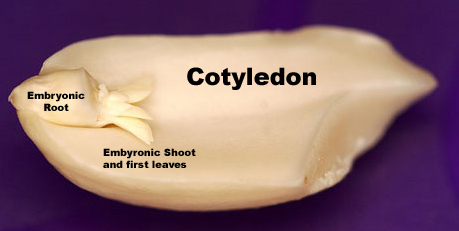
Germination
Peanuts are the subterranean seed of Arachis Hypogaea, a legume. Plant a raw goober 2" deep into warm soil (~68 degrees F), water the soil, and wait. In 7 to 14 days, the seed will likely germinate. The first clue that the seed has germinated is when you see a small bump of soil forming where you planted the seed. A powerful plant is growing underneath this small mound.
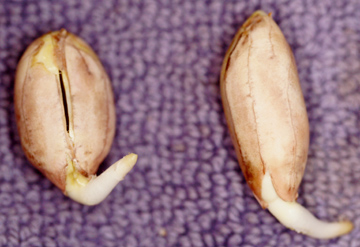
The cotyledons feed the underground plant from stored proteins, and carbohydrates, while the tap root grows deep into the soil. The leaves grow upward, unfurl, and capture light in order to create food.
With ample sunlight and water, the plants grow rapidly as the roots obtain nutrients from the soil, and the leaves manufacture sugar through photosynthesis.
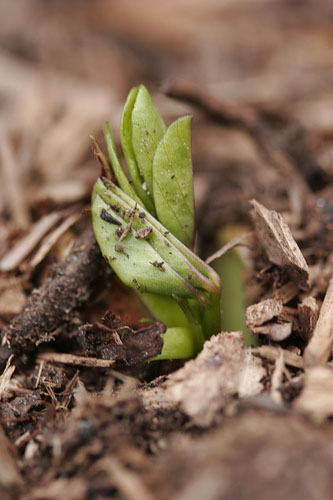
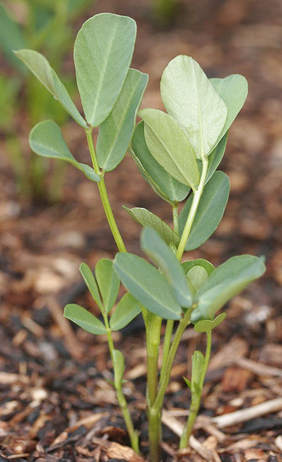
First Flower
Given enough sunlight, nutrients, and water, the plant will flower within about 35 days after planting. Each self pollinating flower lasts only one day. The pollinated flower then forms a gynophore, or peg.
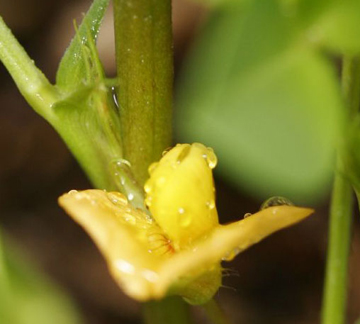
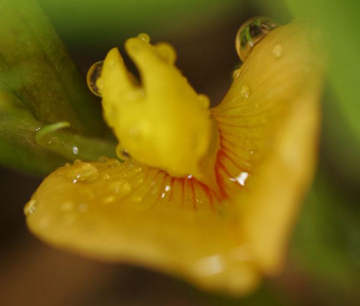
Plant Peg - Gynophore
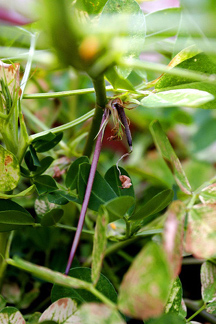
What happens next is Arachis magic. After pollination, the flower's pedicel forms a peg (gynophore), due to cell division beneath the ovary. The peg quickly grows downward where it digs into the soil, due to positive geotropism. The peg contains the growing embryos of the plant. A cap of cells forms next to the withered style, to protect the ovary as it pushes through the soil. Once in the soil, the peg orients itself horizontally, and forms a single shell containing 1-5 seeds, we call pea-nuts. More flowers and pegs grow daily until the plant dies.
Nitrogen Fixation - Symbiosis with Bacteria
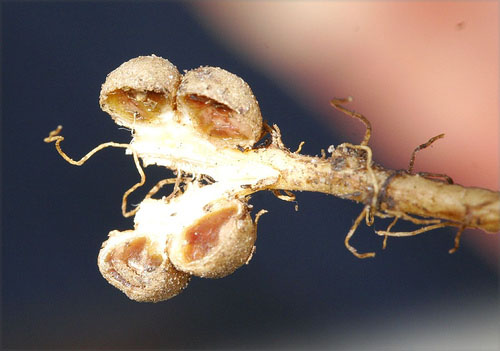
Pea-nuts, and other legumes are able to fix nitrogen from the air because of their symbiotic relationship with specific species of rhizobium bacteria. Small round nodules form on the plant's roots where colonies of bradyrhizobium live, and convert atmospheric N2 into the form of nitrogen that the plant can use. In this photo the nodules have been cut open to show the inner pink color confirming that the bacteria are viable, and productive. Farmers apply liquid or granular bradyrhizobium bacteria cells to the seed before planting. Some soils contain this bacteria naturally but farmers are advised to inoculate to insure they have an adequate amount.
Harvest Time
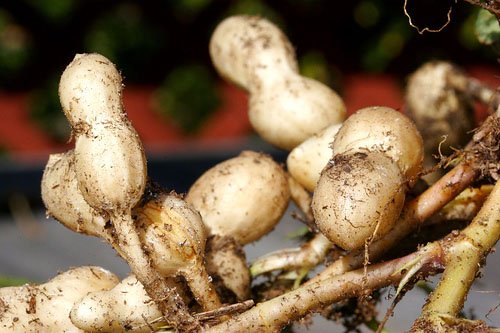
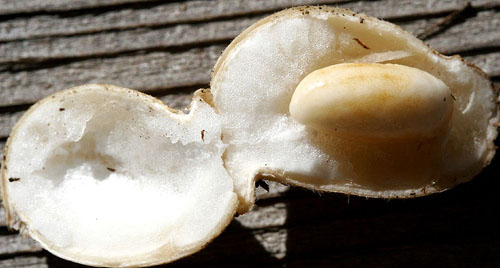
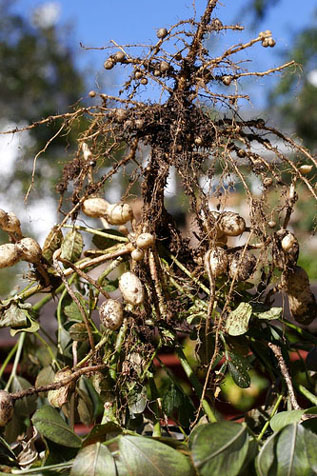
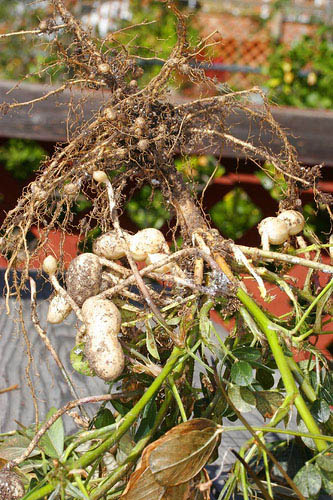
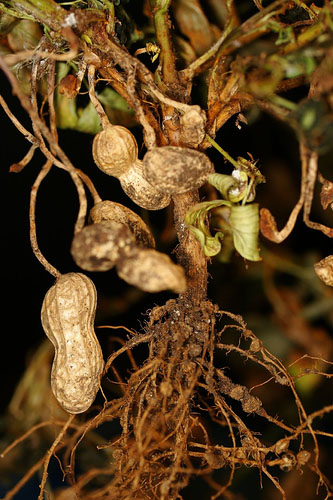
Pea-nut plants are a great source for science fair projects.
How P-nuts Grow on Farms
Planting P-nut Seeds using a 16 Row Planter on Dawson Brother's Farm
Pulaski County, Georgia, video by Georige Peanut Commission, May 26, 2010
Search this site here.
![]()

More peanut farming videos, and information
return to plant origin from peanut plant growth





Comments